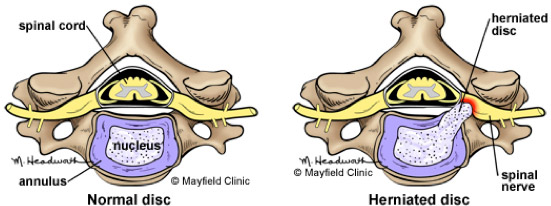by Alan Jordan
I have written extensively on the topic of Modic changes and antibiotic treatment in the Broadgate Journal. A few of the articles that I have written are listed below.
- Modic Changes, a New Disease?
- Why does Exercise Increase Symptoms in Modic patients?
- How to identify Modic patients
- How to become a MAST Certified Clinician
By replicating the findings of Sterling Dr Hanne Albert has proven beyond any doubt that bacteria are indeed found in the discs of patients demonstrating Modic changes as seen on MRI scans. The most commonly found culprit found in both studies was Propionibacterium acnes.This bacteria secretes propionic acid which can “eat away” at the adjacent bone – which in turn results in the inflammation and micro-fractures found in the vertebral bodies adjacent to the infected discs. The inflammation and micro-fractures in the vertebral bodies are responsible for the severe symptoms that Modic patients can demonstrate.
Avascular Discs
Discs have no blood vessels and are therefore termed avascular. As there are no blood vessels in the discs one naturally is inclined to wonder how on earth bacteria can enter a structure that has no blood vessels. In an article in the scientific journal Medical Hypothesis Dr Hanne Albert and Professor Claus Manniche of the MAST Medical Academy propose the following theory. The illustrations below are useful in helping the reader understand the concept.
Normal discs are comprised of approximately 60 rings of cartilage that surround the soft nucleus in the middle of the disc. There are no blood vessels that enter the cartilage and nutrition is supplied via diffusion from the vertebrae above and below the discs – primarily at night.
Individuals that experience a herniated disc – illustration to the right – as can be seen, experience that the soft nuclear material bursts through the outer walls of the disc. As one would expect, the body attempts to “heal” the damaged tissue by creating small vessels (neovasularisation) in the area in order to promote healing. It is postulated that these vessels are the portal of the bacteria to the inner disc. Once the outer fibers have been healed the bacteria remain in place within the disc.
How do they survive?
When the outer fibers of the disc are repaired the environment becomes anaerobic (no oxygen) once again. However, there are bacteria in the body that can ONLY survive in anaerobic environments. Propionibacterium acnes is one of them. They not only survive, but they thrive. Gradually they grow in number and begin causing the damage that was described above – inflammation and micro-fractures.
Where do they come from?
Propionibacterium acnes are found in the upper part of our cheeks and at the base of our hair follicles. Once they enter the blood stream – after tooth brushing for example – they can only survive for approximately 10 minutes due to the fact that there is oxygen in the blood system.. If, however, they can find their way to the new opening in the outer fibers of the discs, they can find a home in which they can live indefinitely.
Conclusions
Scientists were initially sceptical regarding the issue of whether bacteria could in fact be the cause of Modic changes as seen on MRI scans due to the fact that discs have always been known not to have any blood vessels. Sterling and Albert have proven that they can and furthermore identified which bacteria are found in patients with Modic changes.Doctors Albert and Manniche have described a possible pathway for the bacteria to enter the disc. Another theory of the possible cause of Modic changes in patients in whom bacteria cannot be found – mechanically caused Modic changes – will be discussed in a future article.
Dr Alan Jordan, Chiropractor, Phd
Board Member, MAST Medical Academy





